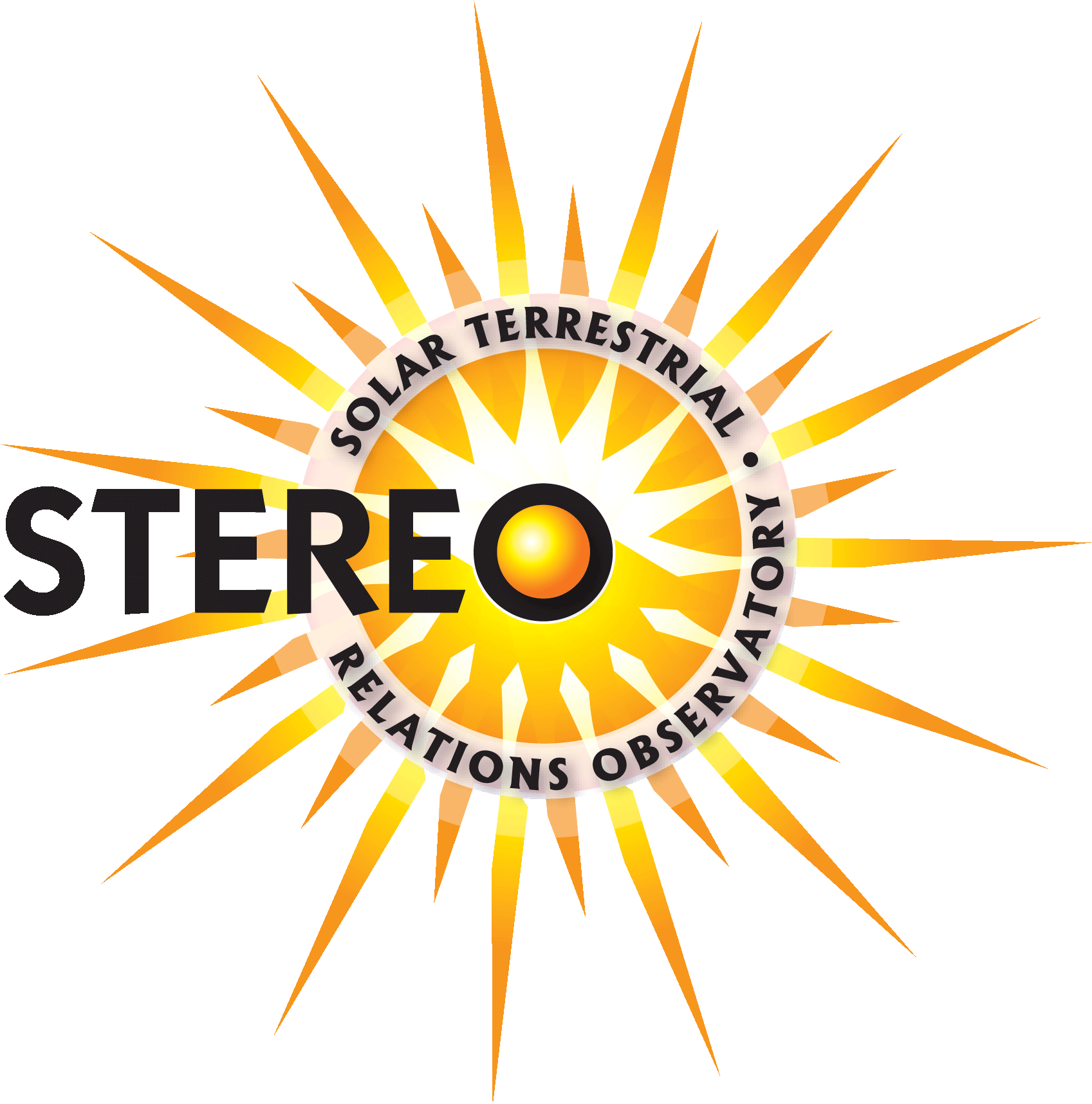

This was an historic step forward for space science: humankind had its first 360 degree view of the solar surface. STEREO Ahead is in an orbit around the sun that's slightly smaller than the earth's; Behind, in one slightly larger. This means Ahead moves faster than the Earth, and Behind slower. Their orbits were in fact designed to separate from the sun-earth line by 22 degree a year in opposite directions, so by 2011, the two spacecraft faced each other an opposite sides of the sun. With this view of a much larger portion of the sun we can identify active regions, which are areas of intense magnetic fields, before they rotate into view from Earth. Active regions are often the sources of solar storms. Being able to see these earlier than ever before is a big help for scientists trying to better predict solar storms.
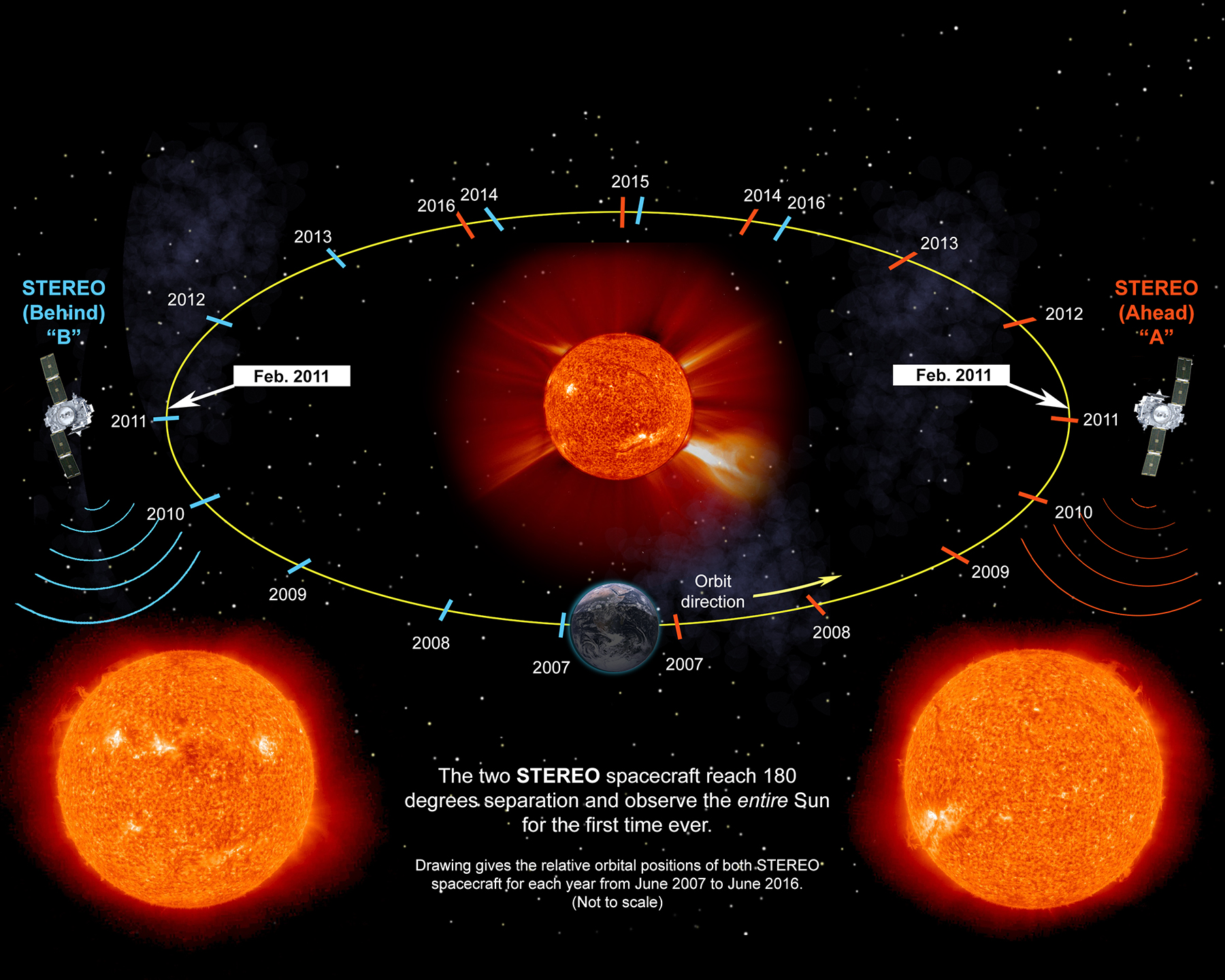
The ever-evolving sun rotates once about every 27 days, but solar activity changes in scales of only a few days. With only the view from earth we miss half the activity occurring in the sun's atmosphere. A 360 degree view of the sun allows for a complete view of solar activity. On the left we show views of the sun from STEREO Ahead and Behind and on the right we combine those views with the perspective of the Solar Dynamics Observatory so we could generate 360 degree maps (right) of the entire sun for the first time in September, 2012. The wavelengths on the right are from top down: 304 Angstroms, 171 Angstroms, and 195 Angstroms. The different wavelengths (shown in false color) show material at different temperatures in the sun's atmosphere.
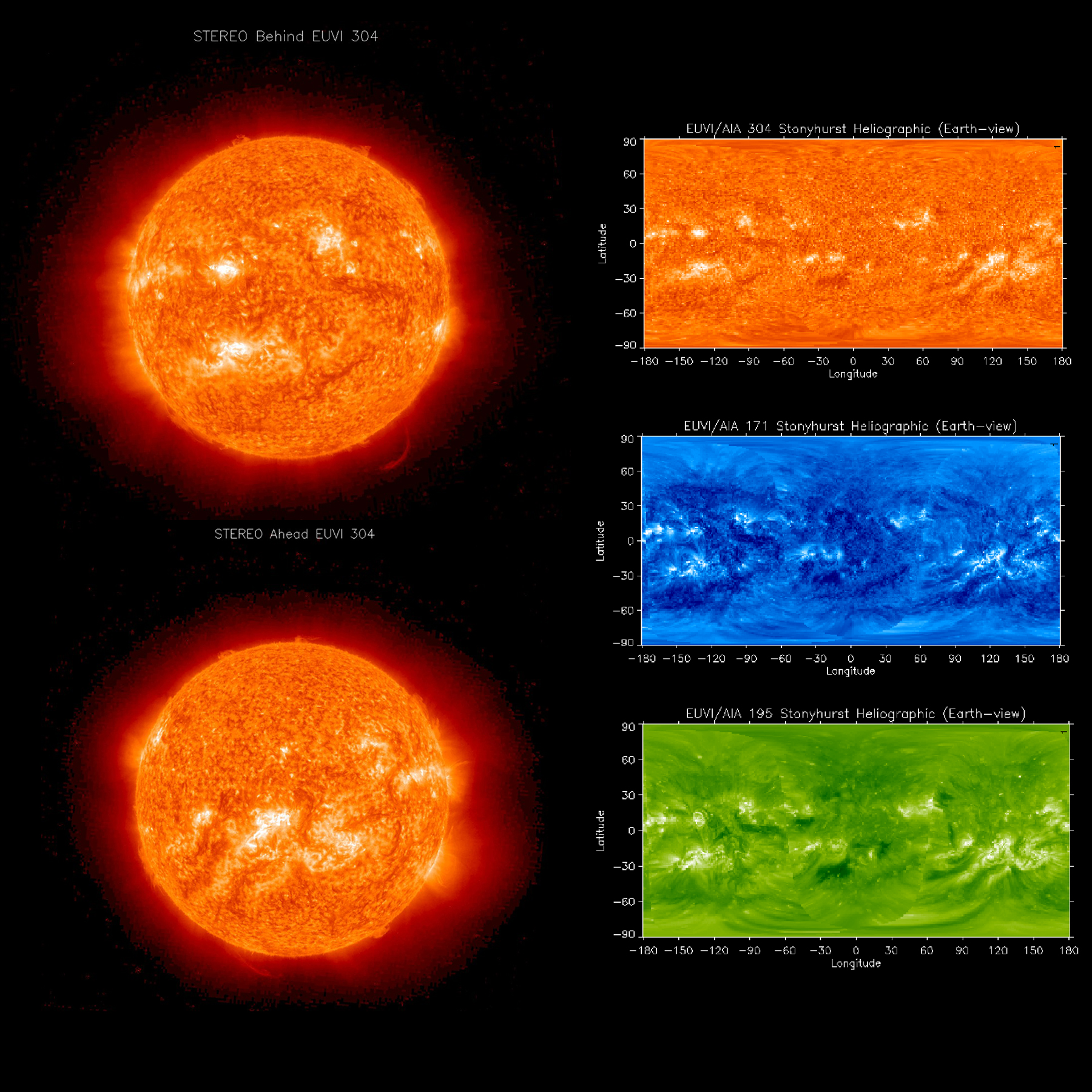
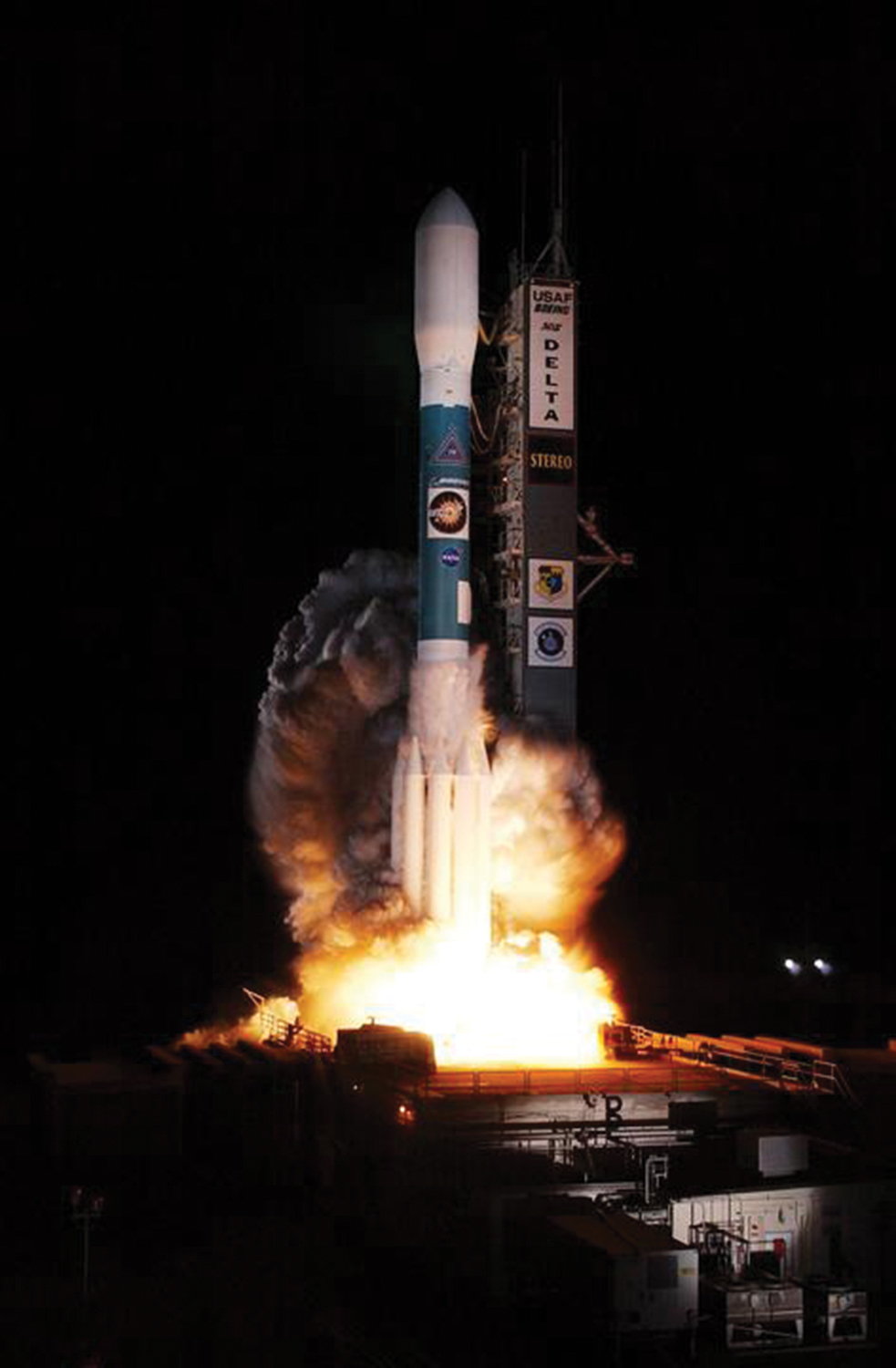
The STEREO (Solar TErrestrial RElations Observatory) mission consists of a pair of two nearly identical space-based observatories. One spacecraft moves ahead of Earth in its orbit, the other trails behind creating a gradual separation. The separation of the two spacecraft has given us a unique multi-point perspective on solar activity on the sun and inner heliosphere simultaneously.
This mission has, for the rst time, provided the rst opportunity to observe and track the speed and changing structure of the solar storms from multiple positions using an array of instrumentation including remote sensing telescopes and radio receivers and numerous sensors of the changing environment at the two spacecraft.
STEREO's instruments have given us a new understanding of solar activity that was not possible without their simultaneous observations of the sun and solar wind obtained from these new points of view. These observations have provided key insights concerning the large scale, global nature of solar activity and how solar storms and related phenomena move through the solar system and affect earth and the other planets.
Each of the spacecraft is about the size of a golf cart, but its solar panels stretch out about 21 feet (6.5 m). STEREO has instruments that can detect and measure radio wave bursts associated with solar storms and others that gather information about the particles themselves as they pass by the spacecraft. Another instrument takes images of the sun in ultraviolet light. Other instruments block out the sun so that we can observe the atmosphere surrounding the sun (called the corona). These coronagraphs can observe CMEs blasted out from the sun and into space. Finally, other telescopes on STEREO keep an eye on the remaining space from the sun to Earth so they can track solar storms.
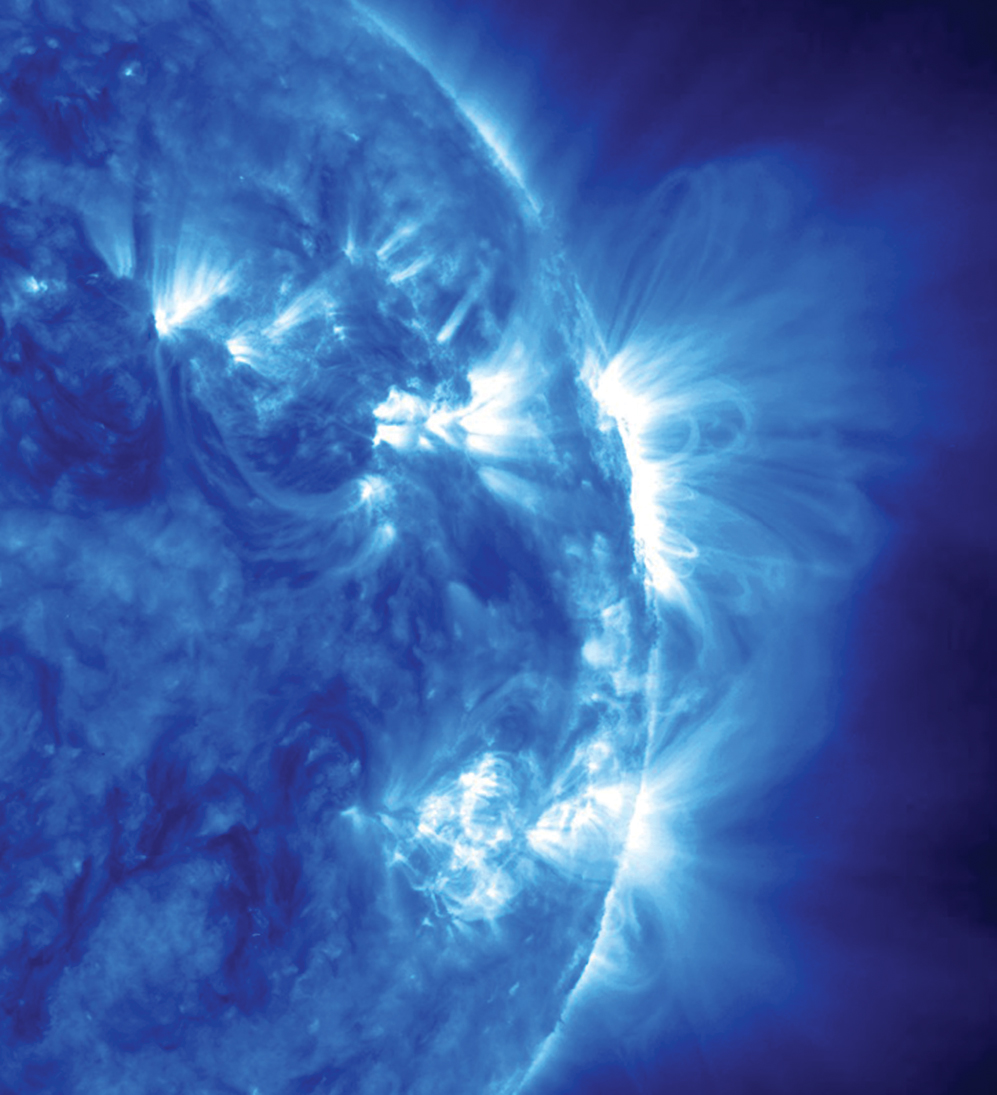
Dual Vantage Points -- sends back data on the sun from two identical, slowly separating spacecraft
First 3D Views of the Sun and Heliosphere -- gives scientists the ability to see the corona and solar storms in three dimensions
Unique Solar Wind Imaging -- provides the measure- ment of the composition and energetics of the solar wind at multiple locations in the inner heliosphere
Tracking Solar Storms through Space -- can follow the propagation and structural changes of solar storms as they race through space
Setting the Stage for Space Exploration -- by observ- ing the sun from widely different angles simultaneously, the STEREO mission gives scientists new insights into how solar storms impact areas of the solar system, information crucial to future interplanetary space travel.
STEREO's SECCHI instrument suite observes the sun in four wavelengths of extreme ultraviolet light. Each wavelength captures plasma at different temperatures and distances above the sun at image resolutions twice what could be achieved before. These were all taken at just about the same time. The bright areas are active regions, often the sources of solar storms. Images from each wavelength are colorized so that they can be immmediately identified.
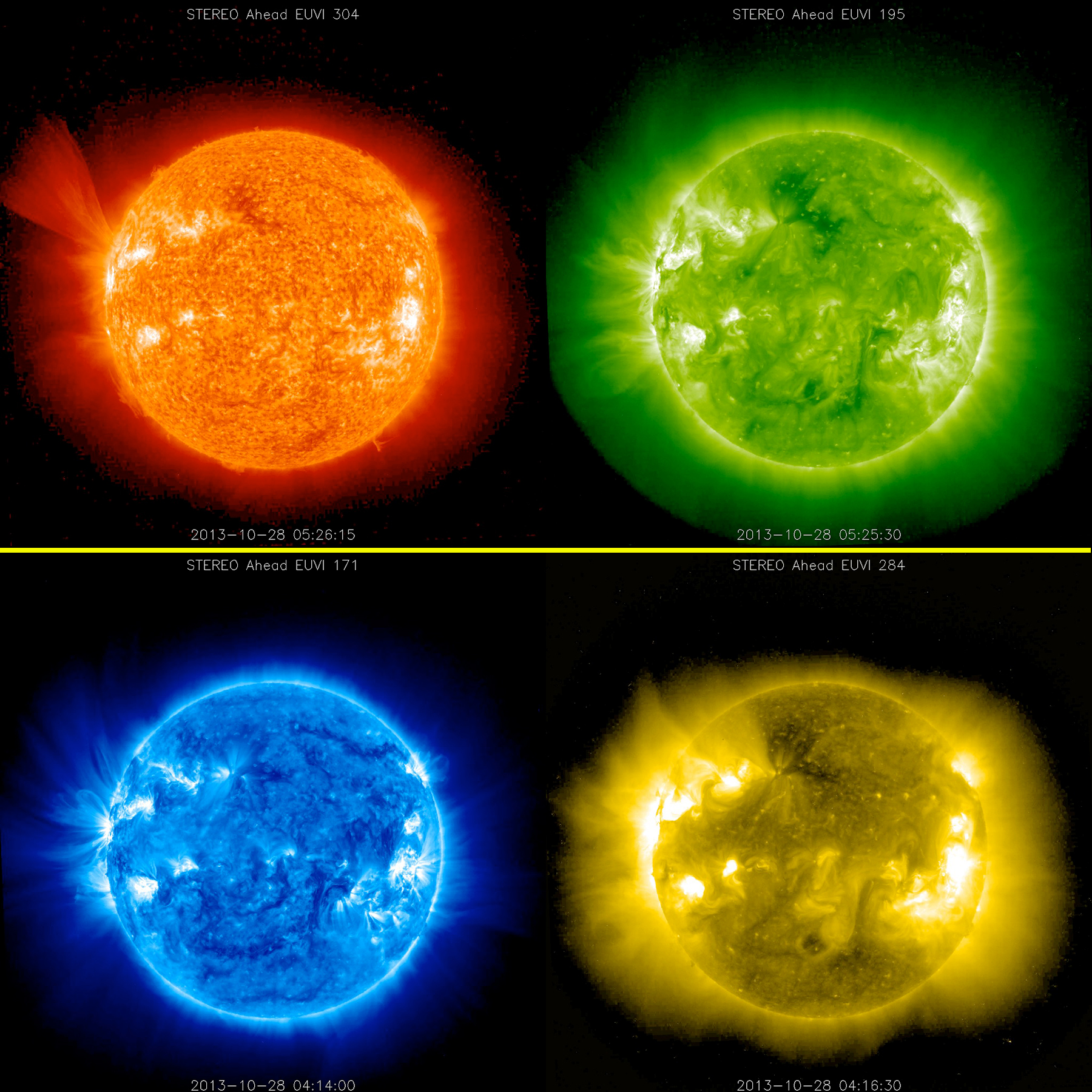
We are magnetically connected to the sun. One of the most important solar events from Earth's perspective is the coronal mass ejection (CME). A CME is the eruption of a huge bubble of plasma (ionized gas) with magnetic field carried along with it. Complicated magnetic fields extend from the solar interior to create great arches and loops above the surface. The buildup and interaction of these magnetic loops supplies the energy to produce the violent explosion of a CME. We call these solar storms space weather. It is the largest of these solar storms that we care about the most. The black disk blocks the sun so that the instrument can observe the fainter features in the corona. The white circle represents the size and location of the sun.

This image combines observations from four instruments. Because of STEREO's unique perspective from two positions, we gain new information about the structure and propagation of CMEs into the solar wind and across the inner solar system. STEREO was able to track the storm from its eruption to the pale, expanding cloud we see heading towards Earth.
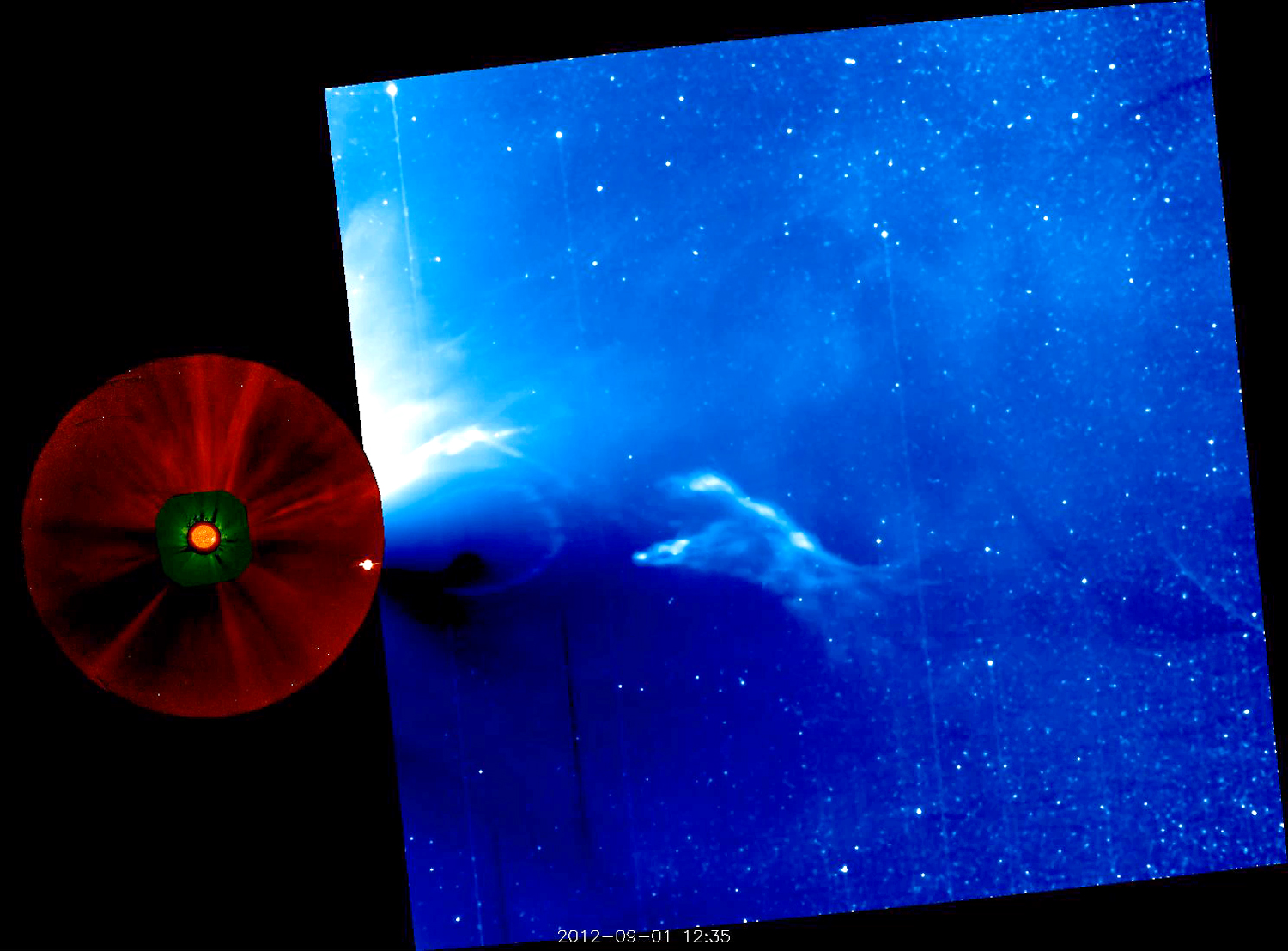
STEREO spacecraft and new data processing techniques have succeeded in tracking space weather events from their origin in the sun's ultra-hot corona to impact with the Earth 93 million miles away, resolving a 40-year mystery about the structure of the phenomenon that causes space weather: how the structures that impact the Earth relate to the corresponding structures in the solar corona. The images connected the original magnetized structure in the sun's corona to the intricate anatomy of an interplanetary storm as it impacted Earth three days later. At the time the data were collected, in late 2008, STEREO-A was nearly 45 degrees ahead of the Earth in its orbit, affording a very clear view of the Earth-Sun line.
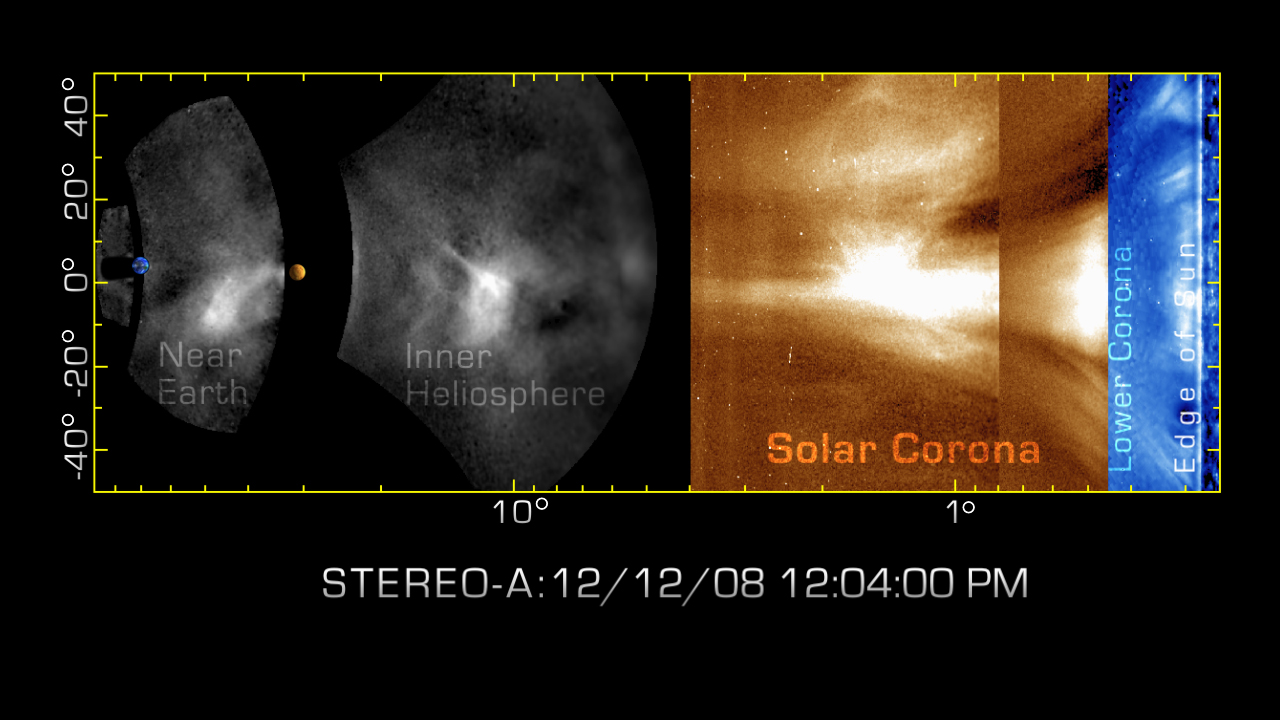
STEREO has provided us with two new capabilities: One is to observe Earth-directed solar storms from the side, allowing us to better predict the arrival of these events, generally the hardest ones to observe from the sun-earth line. In addition, with its vantage points away from Earth, STEREO makes it possible to observe and predict space weather throughout the solar system -- important both for understanding how solar activity affects other planets and for protecting spacecraft far from Earth.
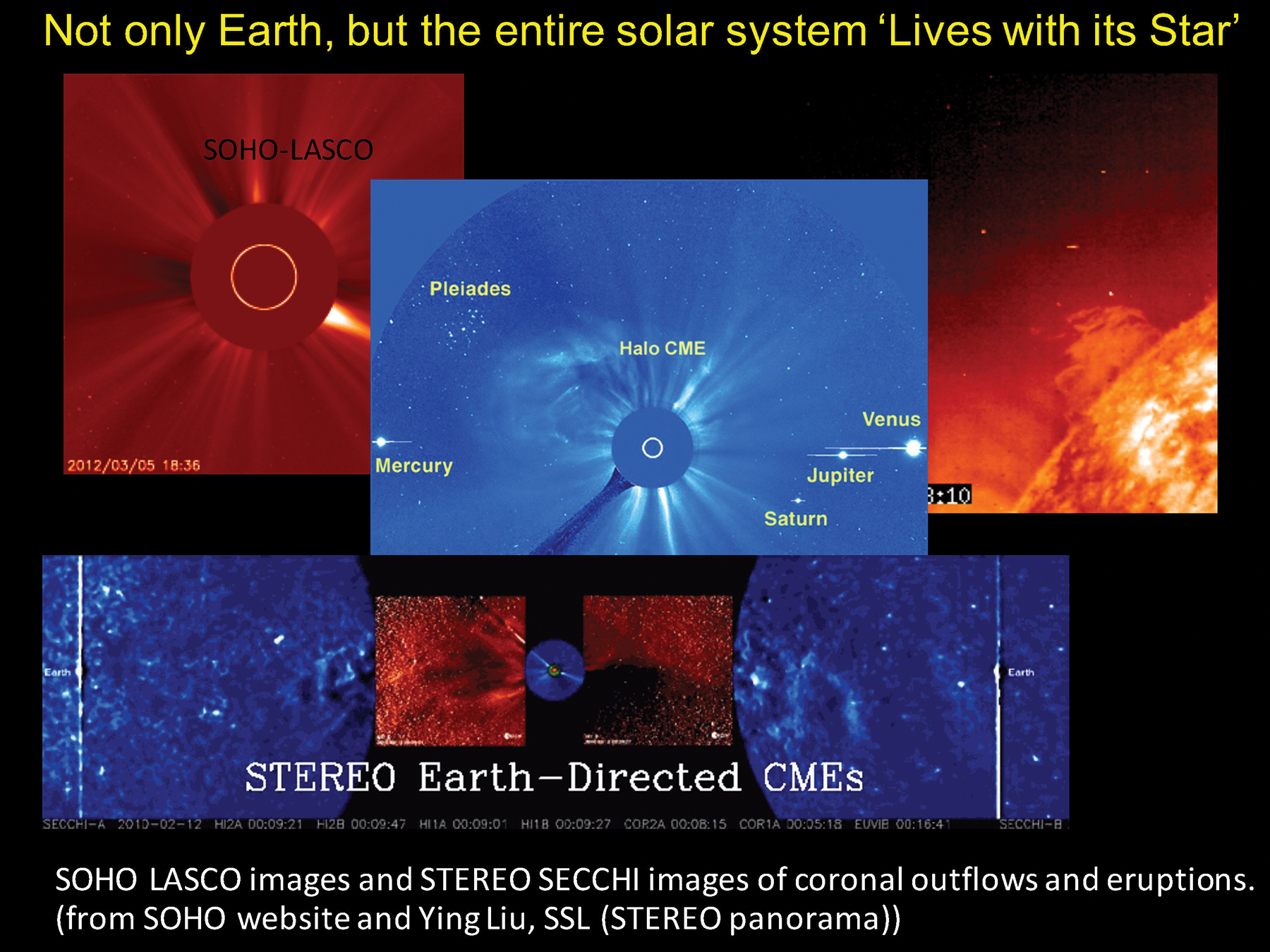
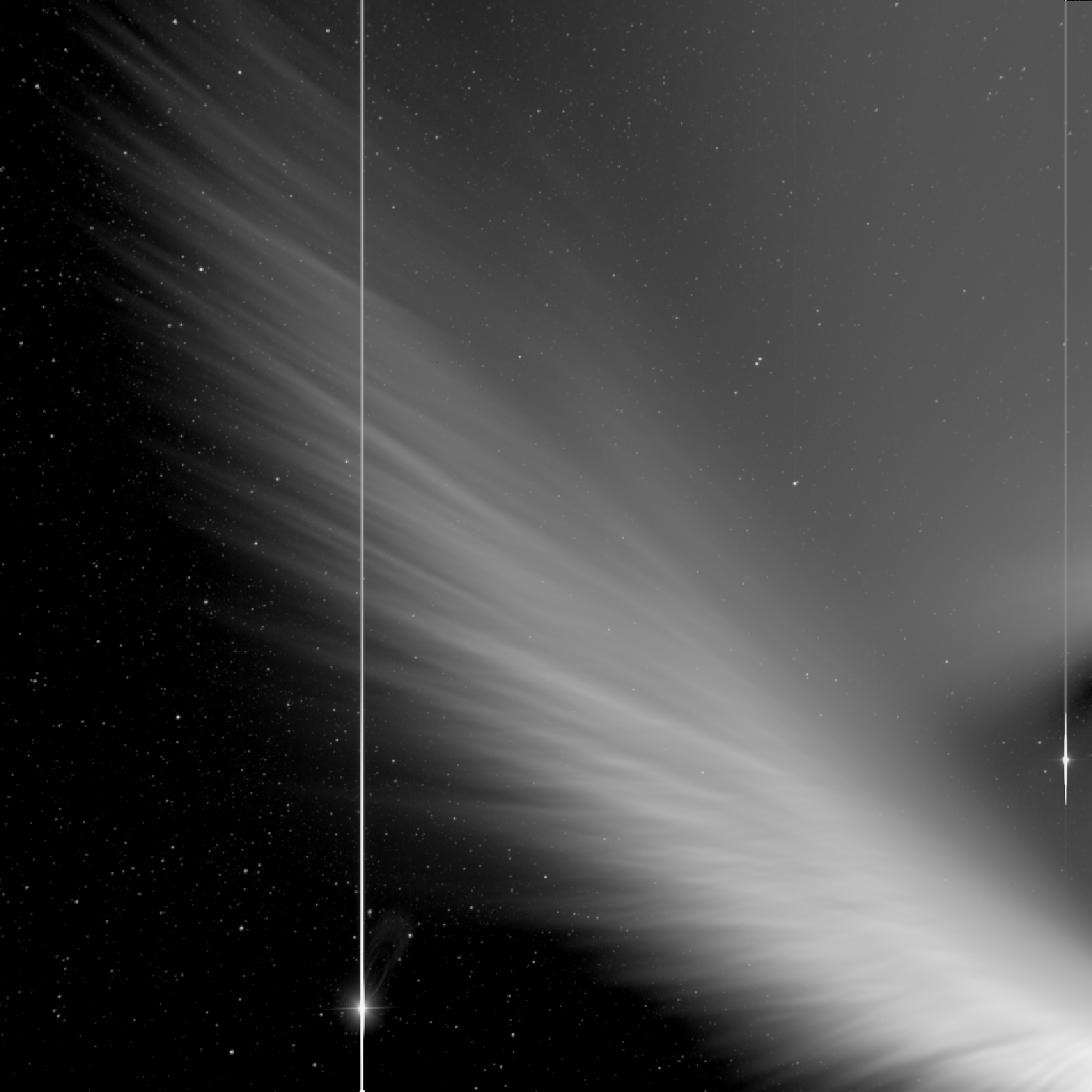
The SECCHI/HI-1A instrument took this spectacular close-up of Comet McNaughton January 17, 2007, on the very rst day that the camera opened its doors. The full field of view of the HI instrument (a wide-angle sky imager) is centered at about 14 degrees from the sun's center and is 20 degrees wide. The comet tail is approximately 7 degrees in length and shows multiple rays. The image shows the comet tail in spectacular detail, especially once the bright comet head left the field of view and stopped saturating the images. These images are very likely the most detailed images ever taken of a comet while it is very close (0.17 Astronomical Units, even closer than Mercury to the sun).

The STEREO Ahead spacecraft was in a great position to observe Comet ISON as it raced to its closest passage by the sun (Nov. 28, 2013). It featured a brilliantly elongated tail as it passed the coronagraph's occulting disk (within 1 million km). Then, it apparently broke up into smaller pieces that continued on its orbit path, much reduced in brightness and with little tail. This image captured ISON after it had broken up.
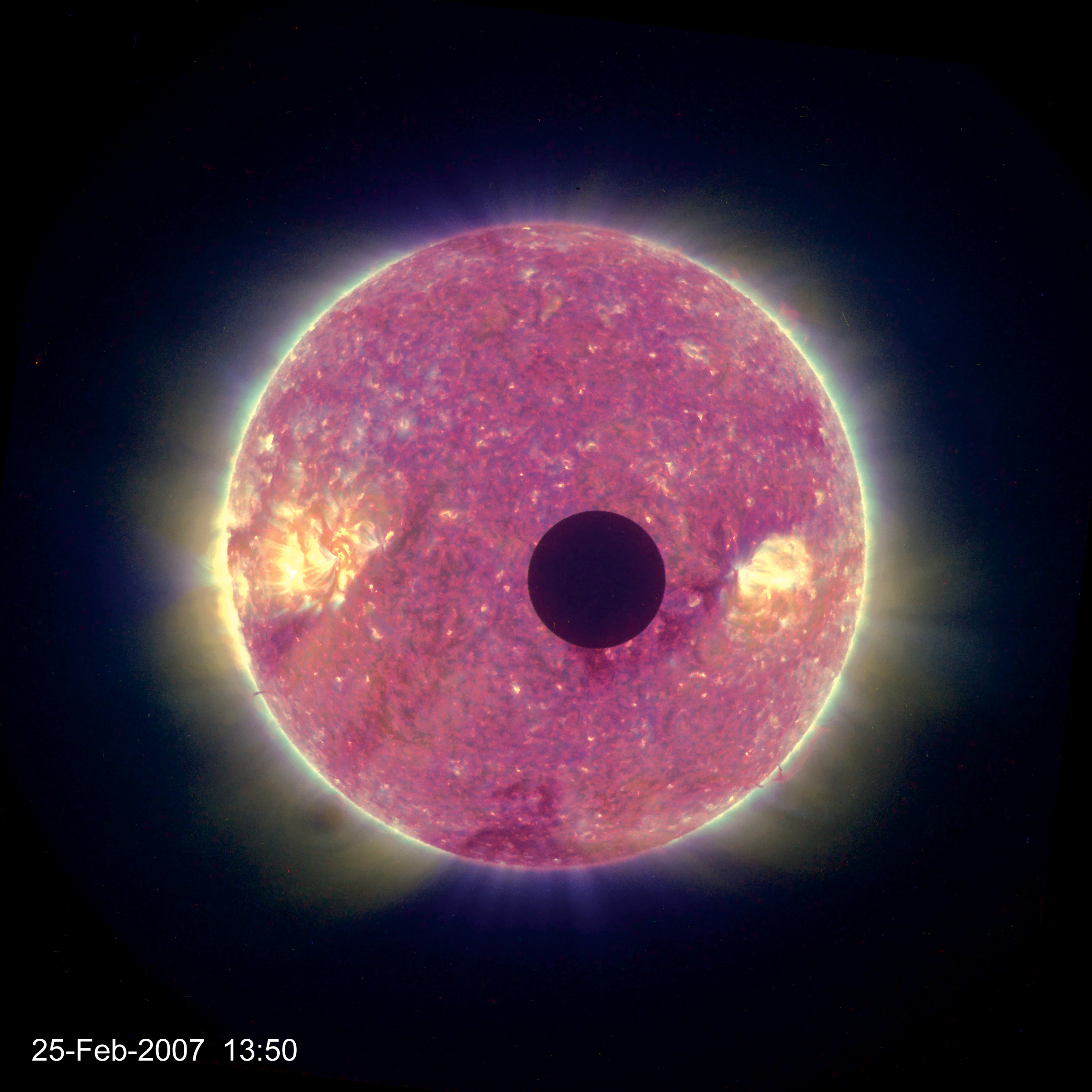
On Feb. 25, 2007, the Moon crossed in front of the sun as seen from STEREO-B when it was about one million miles from the Earth, 4.4 times farther away from the Moon than we are on Earth. As the result, the Moon appeared 4.4 times smaller than what we are used to. Here then, the alignment of STEREO B's position (arranged with a small tweak to its orbit months before) put the Moon in front of the sun. The transit is useful to STEREO scientists for measuring the focus and improving the contrast in image representations of the data as wll as determining the pointing of the STEREO coronagraphs.
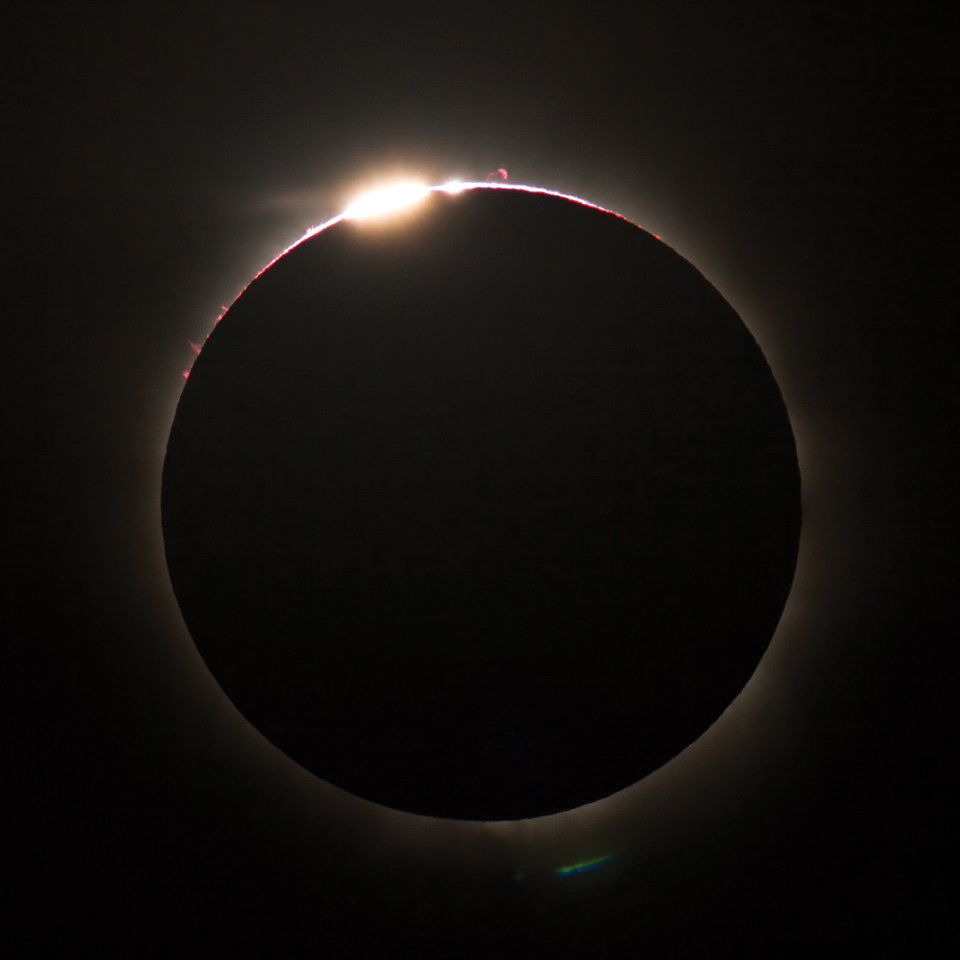
On August 21, 2017, a solar eclipse will be visible from all parts of the contiguous United States. The hundred-mile wide path of this total solar eclipse will arc across the U.S. from Oregon to South Carolina. Total eclipses occur when the Moon passes in front of the sun and the Moon's shadow falls on Earth. This eclipse image, showing the sun just beginning to emerging from behind the Moon, was taken in November, 2012, in Australia.
One of the ve fastest coronal mass ejections (CME) that scientists have ever observed, and the fastest observed by STEREO, blasted away from the sun (July 22, 2012). It roared away at approximately 2930 km/s or 6.5 million mph. On average CMEs move at about 1-2 million mph. Both STEREO probes detected the historic radiation storm of July 2012, when a sunspot erupted and produced one of the most prolific streams of energetic protons in the Space Age. As shown (right image), the view from over the solar north pole shows that Earth was not hit by the CME and without STEREO, researchers might not have known the event occurred at all. This could have been the storm of the century had it impacted Earth.

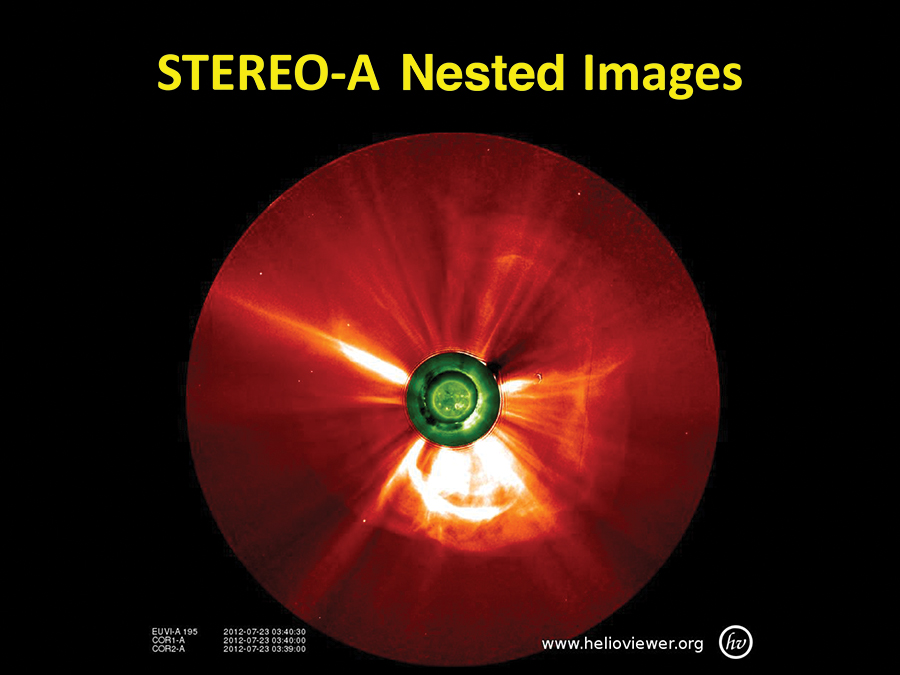
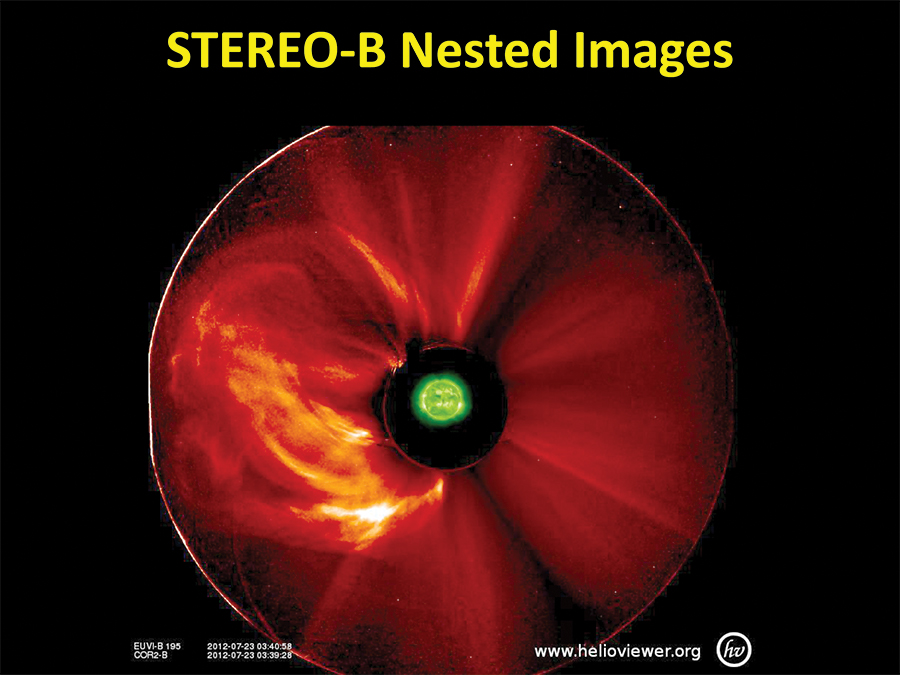
View of a coronal mass ejection on May 1, 2013, from the SECCHI C1 coronagraph, which observes the innermost part of the corona. The instrument's black disk just covers the sun, creating an arti cial total eclipse.
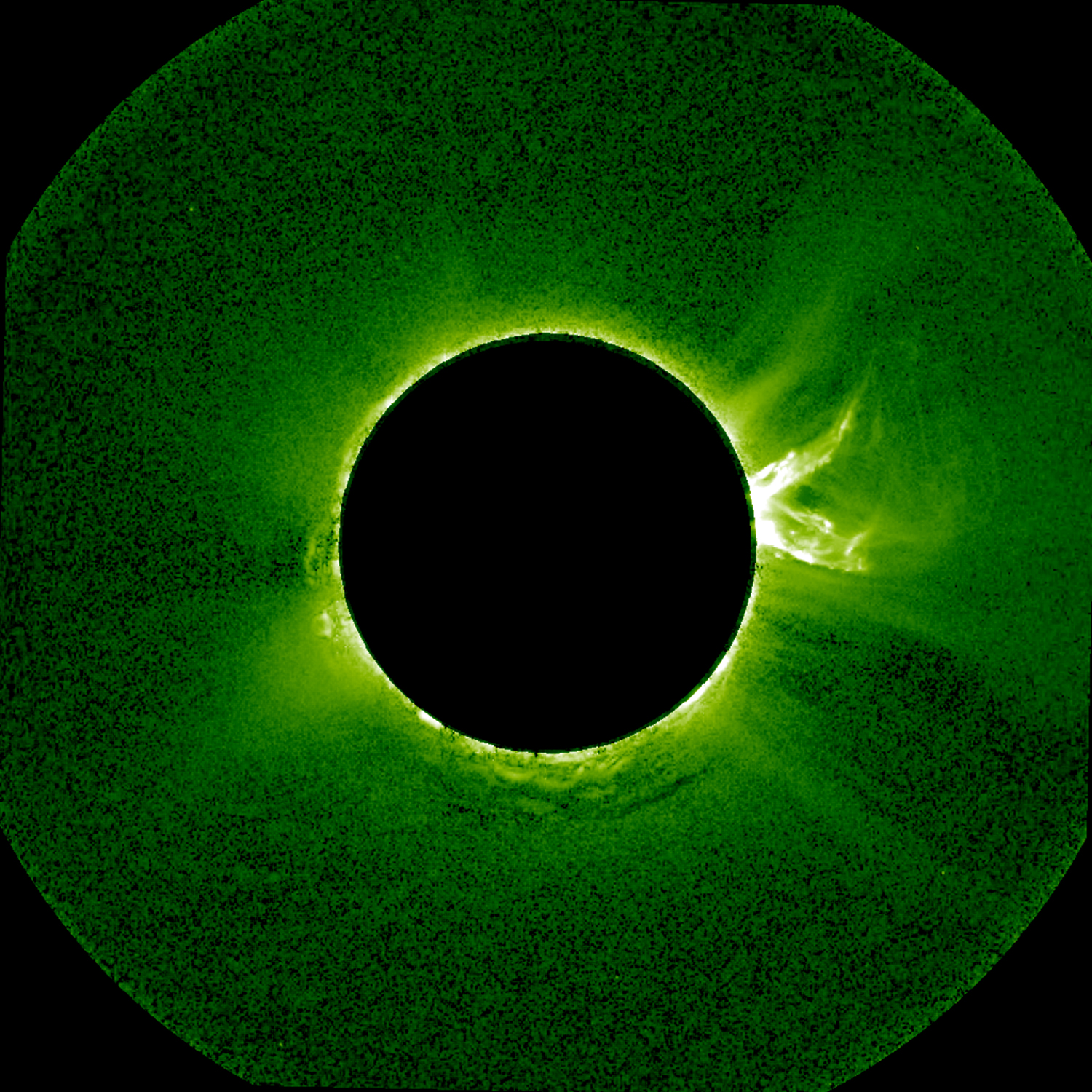
Filaments are huge volumes of twisted magnetic eld that entrain cooler gas in the hot corona. One such lament, extending a quarter of the way around the sun, some 1 million km, was observed erupting and untwisting by the SECCHU EUVI telescope on December 6, 2010. The detailed action was observed in extreme ultraviolet light of ionized helium.
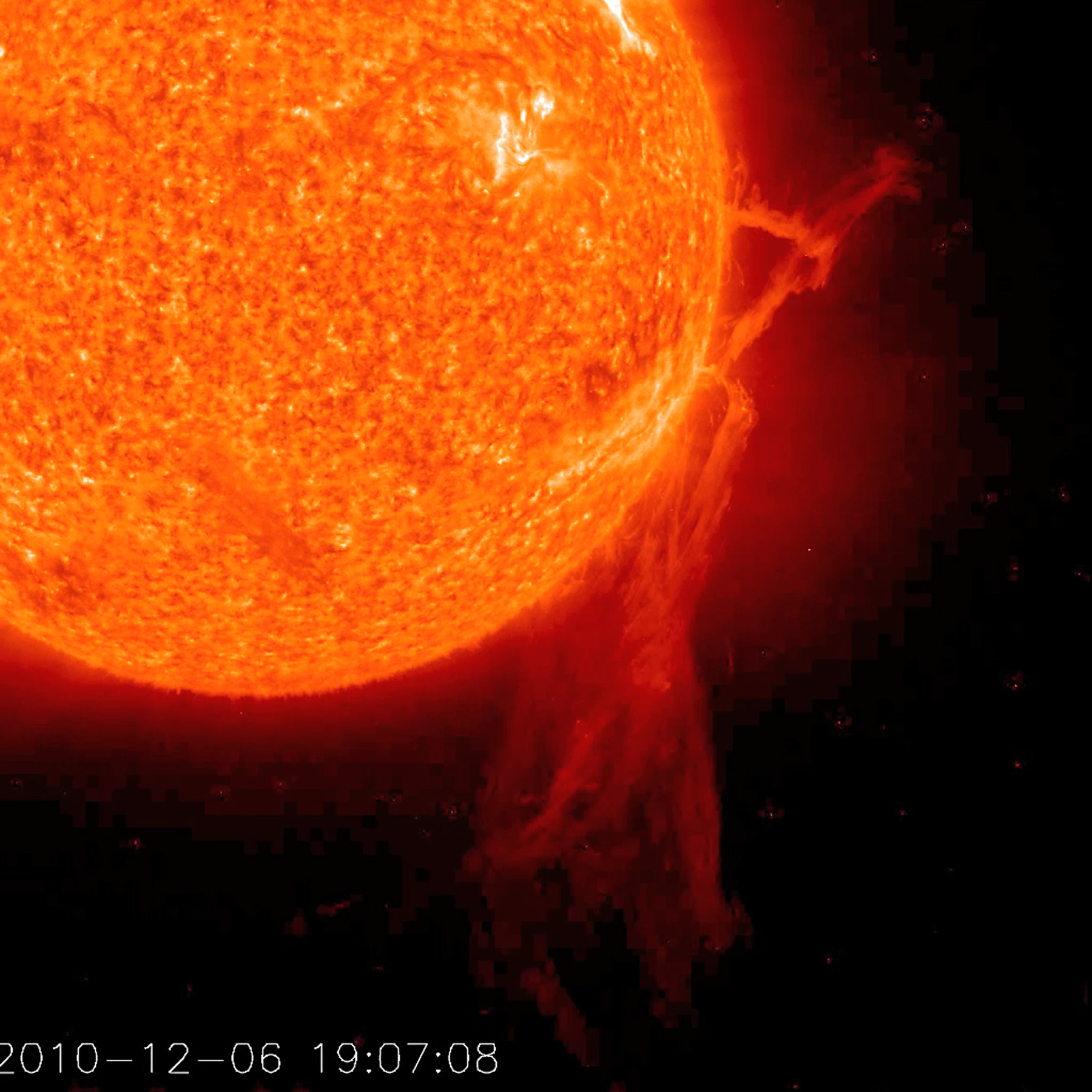
On their way to Earth the solar storms known as coronal mass ejections (CMEs) interact with the surrounding solar wind, the tenuous flow of gasses routinely emitted by the sun. The interaction of the CME with the solar wind results in shock waves that, in turn, produce high energy particles (mostly protons) that can be a hazard to spacecraft and astronauts. Understanding the structure of the CME and solar wind are key to predicting the occurrence and effects of these particles. STEREO contributes to studying these particles by imaging of solar storms and measuring particles passing the spacecraft. In addition, the observatories have scienti c radio receivers that detect electrons accelerated at CME shocks or shooting out into the solar system along magnetic field lines. (Courtesy of N. Gopalswamy)
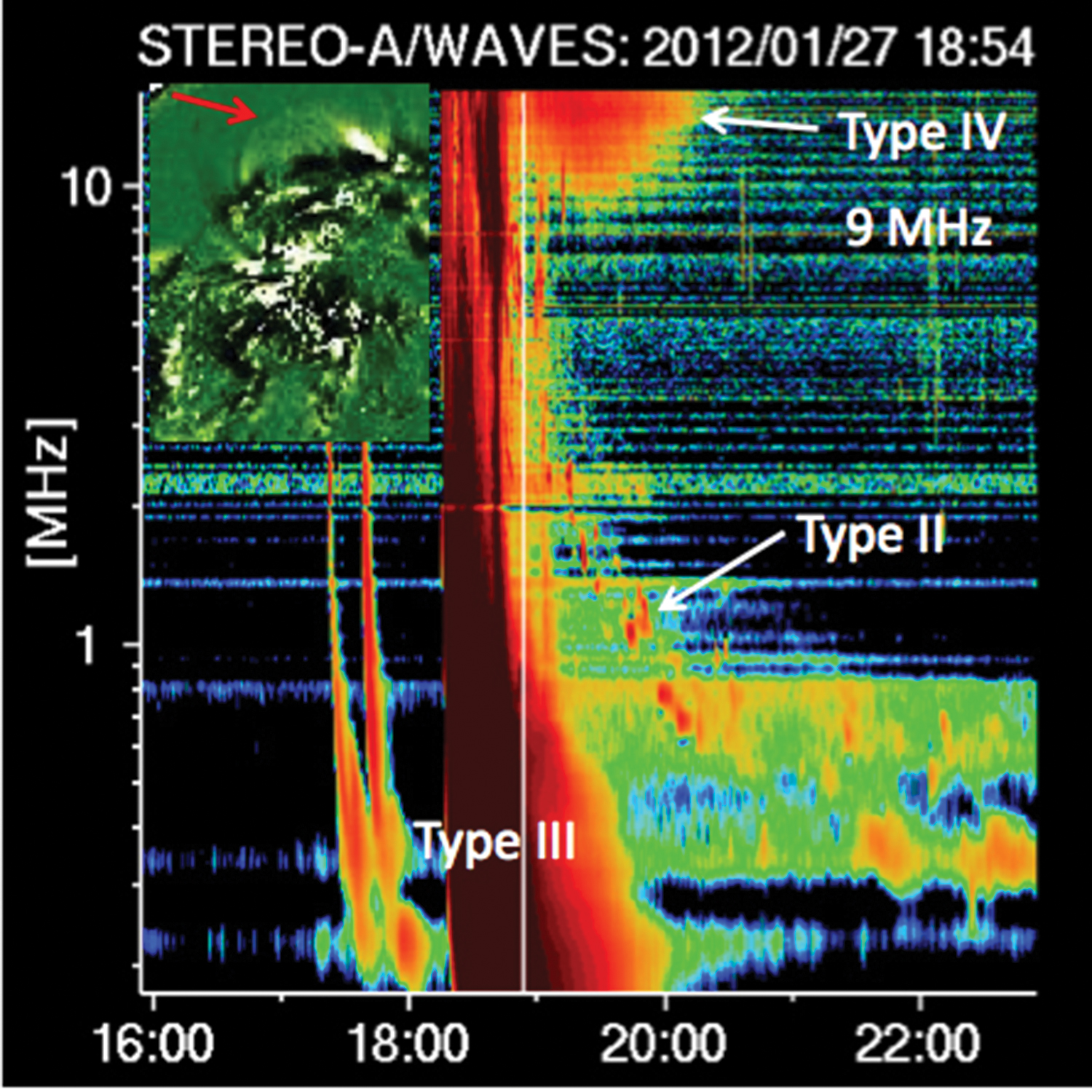
A unique polar coronal jet observation was made on June 7, 2007. Analysis of the images from the two distinct viewpoints of the STEREO spacecraft reveals an unmistakable helical structure in the jet. These pioneering, multi-viewpoint observations from STEREO provide the first conclusive evidence for the jet's helical geometry. Coronal jets are small-scale transient ejections of hot gases, or plasma, occurring in the solar atmosphere. During a typical event, about a million tons of matter are ejected at speeds reaching a million miles per hour over a few minutes' time. The jets are believed to contribute signi cantly to the mass ow constantly ejected by the sun, known as the solar wind.
